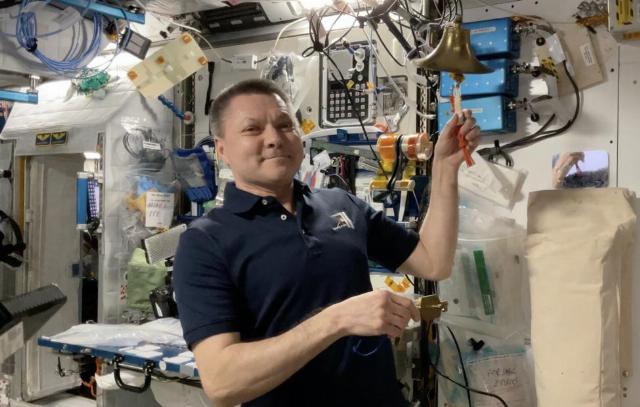The device of this series was launched for the first time since 2013.
MOSCOW, September 24. /tass/. For the first time in the history of modern biosatellites, the scientific program for the Bion-M project No. 2 has been implemented only by Russian researchers. Oleg Kononenko, Hero of the Russian Federation, commander of the Roscosmos cosmonaut detachment, deputy head of the Gagarin Cosmonaut Training Center, told TASS about this.
The biosatellite, launched on August 20 from the Baikonur cosmodrome, landed on September 19 in the steppes of the Orenburg region after 30 days in space. "In general, the flight of the Bion-M biosatellite No. 2 was represented by the widest scientific program, which for the first time in the history of modern biosatellites was implemented only by Russian researchers. This is a very significant event in the exploration of outer space, providing an opportunity for the much-needed biological indication of new orbits. We look forward to the scientists' conclusions with great impatience," Kononenko said.
The cosmonaut emphasized that the biosatellite was launched after more than a 12-year hiatus - the first flight of the device of this series, "Bion-M" No. 1, took place between April 19 and May 19, 2013. "Russian scientists have been waiting for this launch, as the scientific results obtained during the Bion-M No. 1 flight revealed a number of previously unknown problems in the field of the effects of space flight factors on a living organism, which served as the basis for continuing research on unmanned biological satellites of the Bion-M series," Kononenko said.
He added that cooperation with NASA in the framework of experiments on rodent research on board the ISS ended in 2017, "and Russian scientists have the only opportunity left to conduct research on mammals - the continuation of the biosatellite program."
New orbit
Kononenko recalled that initially Bion-M No. 2 was planned to be sent into orbit with the same inclination as the ISS, but with an altitude of 800 km. "However, over time, new challenges have emerged, and testing of new space routes in terms of biosafety has been entrusted to the BION mission. The biosatellite's flight took place in a new sun-synchronous orbit with an inclination of about 97-98 degrees. In addition to the obvious practical benefits, this orbit, unlike the well-studied orbit with an inclination of 50-60 degrees, brings scientists closer to understanding the long-term impact on biological objects of a radiation profile close to that which will appear when leaving the Earth's magnetosphere," he said.
The cosmonaut stressed that humanity already has experience of flights to the moon, but these were very short missions. "Here, bio-objects with a fairly short life cycle spent 30 days in a new orbit," he added.
Living organisms
The main biological objects of the Bion-M project No. 2 are mice and flies. "Mice are mammals, their genome has a lot in common with the human genome, and a 30-day flight with an average lifespan of two years is very long. Scientists study the basic physiological parameters of animals immediately after landing and within a month after landing in order to assess the dynamics of their body's readaptation to terrestrial conditions. Only males participate in the study, however, in addition to the classic animal line, scientists sent mice with reduced intracellular protection from adverse environmental factors, which is a kind of limitation for assessing the safety of the new orbit," Kononenko said.
He clarified that about 50% of the fruit fly genome is also similar to the human one. "But at the level of cellular organization, and even neurons, there are really few differences. The life cycle of flies is very short, and in flight, experts plan to obtain two or three consecutive generations and then cultivate them in the laboratory to understand whether the changes persist for several generations, that is, in fact, to assess the long-term consequences for the population. But the researchers have gone even further - they plan to simulate deep space exploration in a study with flies," said the commander of the Roscosmos cosmonaut squad.
According to him, in the Cytomechanarium experiment on the Russian segment of the ISS in April, scientists received flies, the direct descendants of which went on a space flight on BION and after returning will fly back to the ISS. "It's very similar to flying to other bodies of the Solar System, staying in low gravity conditions and flying back," the cosmonaut clarified.
In addition, Kononenko added that the scientific program for the Bion-M project No. 2 includes many other experiments - microbiological, biotechnological, radiobiological, as well as experiments on protein crystallization and cell growth. "This time, the number of educational experiments on the biosatellite has increased, in which schoolchildren work with ants and seeds of various plants, which gives the children the opportunity to feel like real scientists and get really interesting results in interaction with senior colleagues," the cosmonaut emphasized.

